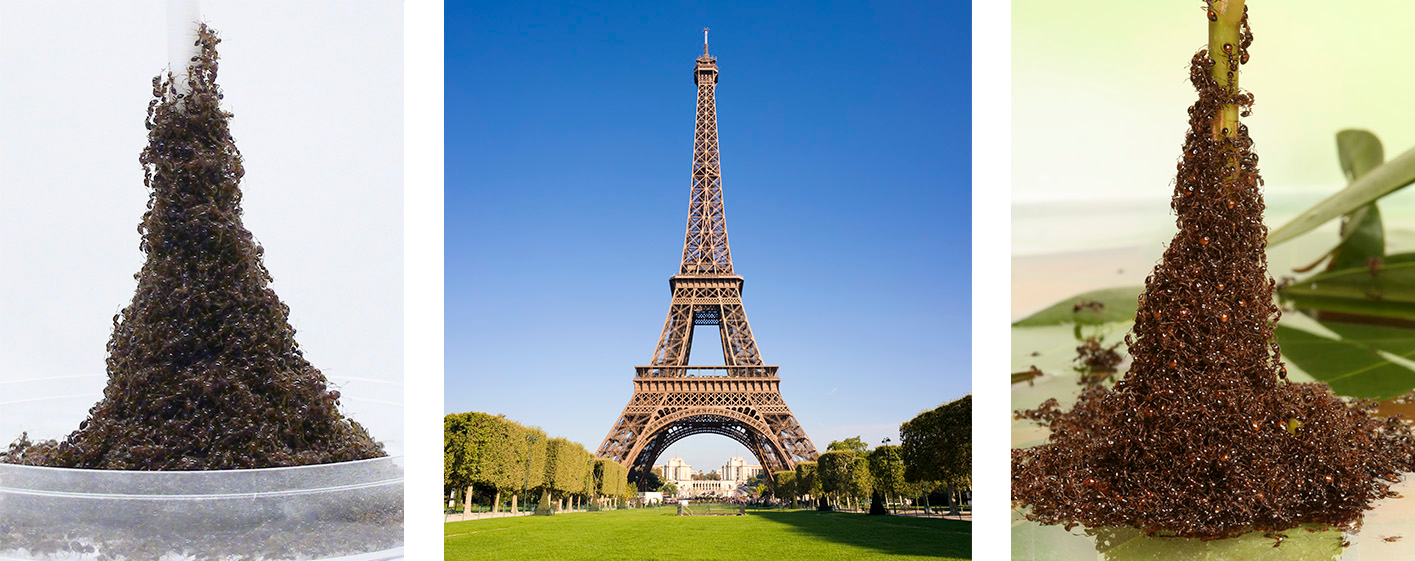How Fire Ants Form Towers More Than 30 Ants High
And they circulate through the towers like water in a fountain.

Fire ants may not be cute or cuddly, but they have some pretty cool tricks. They can form rafts to survive floods, and researchers have now figured out how they form towers to escape danger or surmount obstacles.
The ants don’t consciously decide to throw themselves on top one another to build towers. Rather, it takes a lot of trial and error, with the ants following certain basic rules. First, they wander around without direction until they come to an empty space in a group. Then they position and brace themselves to support other ants clambering over them. They do this horizontally to form rafts, and vertically to form towers. The towers can be more than 30 ants high, and end up looking a bit like the Eiffel Tower—with a wide base that evenly distributes weight.
Supporting other ants is no problem for these insects. “We found that ants can withstand 750 times their body weight without injury, but they seem to be most comfortable supporting three ants on their backs,” said report coauthor Craig Tovey, a professor at the Georgia Institute of Technology, in a release. “Any more than three and they’ll simply give up, break their holds and walk away.”
Time lapse footage of the towers show they’re not static formations. After feeding ants radioactive food, the researchers watched them build a tower in an X-ray machine to better understand the inner workings of the living structures. They found the tower is actually perpetually sinking, and when ants slide to the bottom, they make their way out from under the pile through tunnels among the ants in the base. Then they head back up the tower again build some more. “The ants are circulating like a water fountain, in reverse,” Tovey told Nature.
They may be tiny, but fire ant engineering may offer humans some insights, such as for using swarms of tiny robots to build things.



















Follow us on Twitter to get the latest on the world's hidden wonders.
Like us on Facebook to get the latest on the world's hidden wonders.
Follow us on Twitter Like us on Facebook